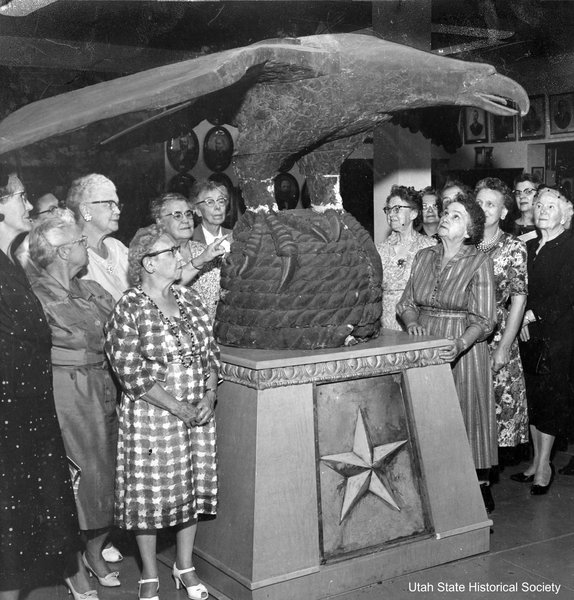Dublin Core
Title
Description
Located at the top of Salt Lake City's Main Street just west of Utah's State Capitol building, the Pioneer Memorial Museum houses everything from Brigham Young’s wagon to a two-headed lamb. Now an important place preserving the history of Utah’s first white settlers, the museum was once the subject of a lawsuit about who decides where museums should go and why.
The Daughters of Utah Pioneers -- or DUP for short -- is a female-run non-profit dedicated to preserving the heritage of people who settled the place we now call Utah between 1847 and 1869. They record family lore, preserve artifacts, and gather in “camps” to exchange histories about their ancestors. In the late 1930s, the DUP began advocating for their own museum to share their collection and host events. Breaking the strict gender norms of the period, DUP women directly lobbied lawmakers to fund their museum, filling the male-dominated legislature gallery to make their presence known. At the same time, they blended their lobbying with ideas about feminine hospitality, serving “sandwiches, olives, drinks and cookies” to representatives in their office while discussing state building appropriations.
Achieving funding for the building in 1945 solved only one problem for the DUP. The cost of materials nearly doubled after the war, making fundraising more difficult. Worse, neighbors in the Marmalade District, where the building was planned, protested the museum, saying it would devalue their property, cause traffic congestion, and “obstruct vistas.” Organizations such as the LDS Church and Auerbach’s Department Store voiced support for the museum and made donations to the building fund, but the neighbors took the DUP to court.
The case made it to Utah's Supreme Court where Justices debated whether it was fair for state funds to support a non-profit, and questioned whether the DUP were unfairly promoting the Mormon faith in their story-telling. Because museums are exempt from city zoning laws, the DUP argued their right to build just west of the Capitol. The court eventually ruled in their favor, saying the DUP were contributing to a public good by preserving the history of the state’s early white settlers. The Pioneer Memorial Museum -- despite all opposition -- became Utah’s de facto state museum for years to come.
Creator
Source
_______________
See “Thomas v. Daughters of Utah Pioneers,” 114 Utah 108, 197 P.2d 477 (Utah Supreme Court, 1948); “Pioneer Memorial Termed Wasteful, Poorly Planned,” December 24, 1948, Salt Lake Telegram; “DUP Asks Home Owners to Unite Protests,” February 2, 1946, Salt Lake Telegram; “Dup Court Fight Continues on Pioneer Memorial,” August 26, 1948, Springville Herald; “Proposed Capitol Building – Congested Menace,” January 24, 1948, Salt Lake Telegram; “Let's Settle the Legality Issue,” January 31, 1946, Salt Lake Telegram.

